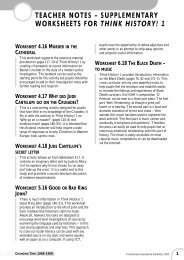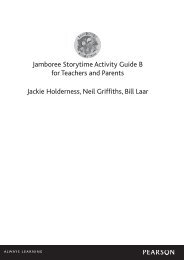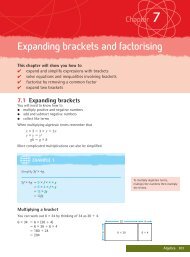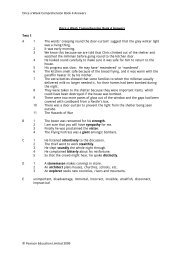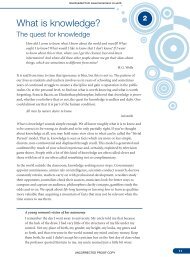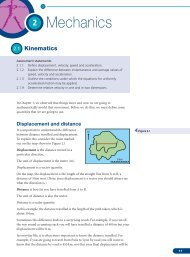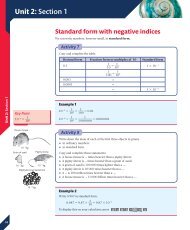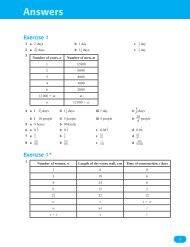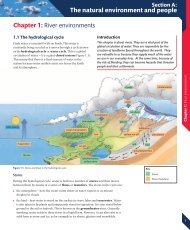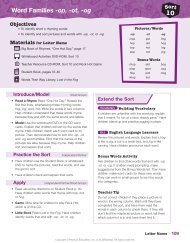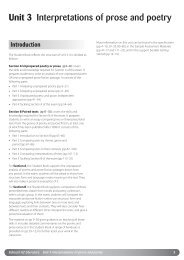Chapter 1: Hardware - Pearson Schools
Chapter 1: Hardware - Pearson Schools
Chapter 1: Hardware - Pearson Schools
You also want an ePaper? Increase the reach of your titles
YUMPU automatically turns print PDFs into web optimized ePapers that Google loves.
Exercise 1.1<br />
1. Daily life can be affected by ICT systems.<br />
A<br />
B<br />
C<br />
D<br />
Listening to the radio<br />
Doing the ironing<br />
Feeding your pet<br />
Watching TV<br />
Put a cross in one box to show which aspect of daily life would not be affected<br />
immediately by the failure of an associated ICT system.<br />
A<br />
B<br />
Figure 1.7 A hand-held computer attached to a<br />
larger keyboard<br />
C<br />
D<br />
2. Describe the similarities and differences between data and information.<br />
3. Explain what is meant by hardware.<br />
4. Draw a labelled diagram of a desktop computer system showing the range of<br />
hardware devices that could be attached to it.<br />
5. Describe the similarities and differences between a desktop computer and a<br />
laptop computer.<br />
6. Describe the similarities and differences between a desktop computer and a<br />
hand-held computer.<br />
7. Explain how a PDA user can benefit from having an external keyboard.<br />
8. Figure 1.2 shows the flow of data through the input–output process. If the input<br />
was the intake of pupils into a school, describe what would represent the<br />
‘PROCESS’, the ‘INSTRUCTIONS’ and the ‘FINAL OUTPUT’ (see Figure 1.8).<br />
Pupils<br />
inflow ?<br />
Process<br />
Final output<br />
Figure 1.8 Another form of data flow<br />
<strong>Chapter</strong> 1: <strong>Hardware</strong><br />
computer occasionally used for word processing, email and web browsing.<br />
However, a faster processor is required for a computer also used for playing online<br />
multimedia games and making heavy use of multimedia applications; an Intel<br />
Pentium Quad Core processor would be suitable.<br />
An example of a microprocessor is the Intel Core 2 Duo E8600 Processor (3.33GHz,<br />
1333MHz FSB, 6MB Cache). This processor has two cores and the speed at which these<br />
run is 3.33GHz. The front side bus (FSB) is the bus that carries data between the<br />
processor and memory and this can transfer data at a speed of 1333MHz. The cache is<br />
6MB of RAM memory built into the microprocessor chip. Processing will be faster if<br />
there are more processors, running at faster speeds with a larger on-board cache.<br />
Figure 1.9 An Intel Core 2 Duo microprocessor<br />
5



